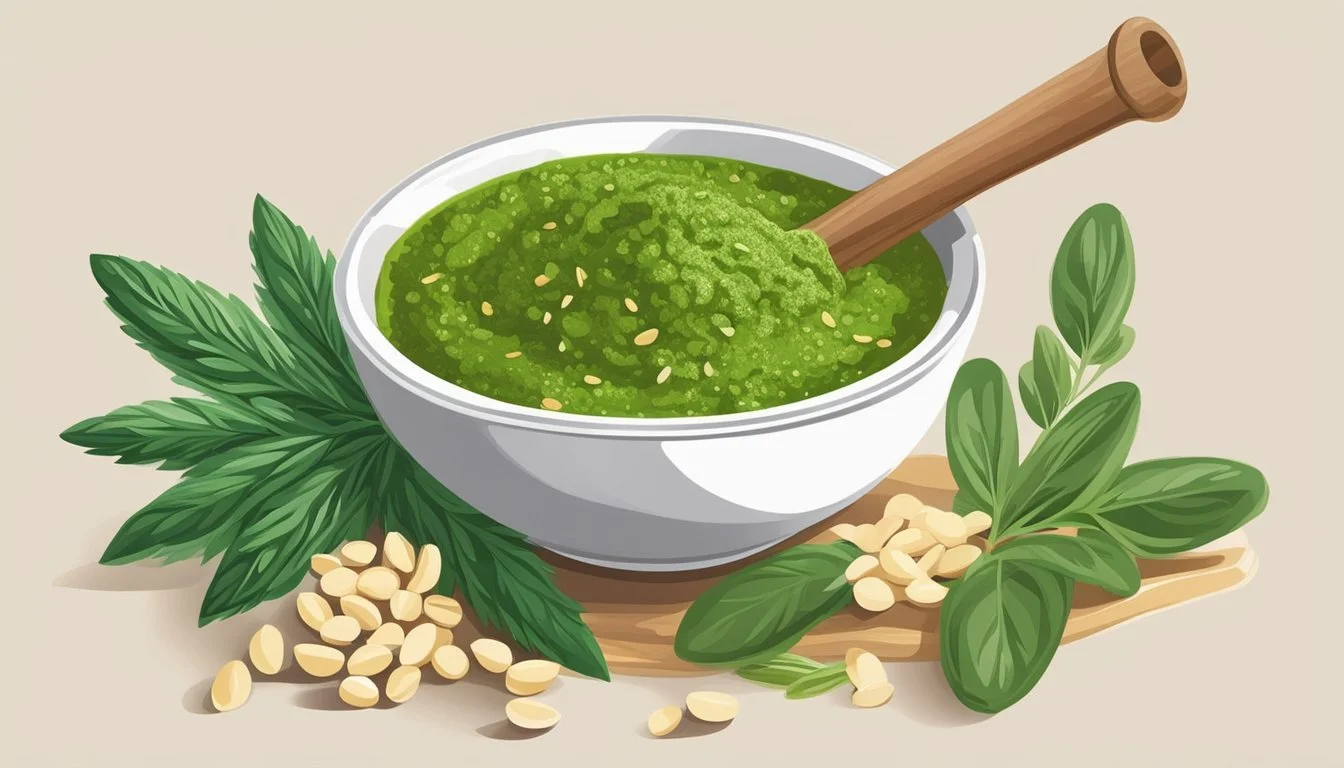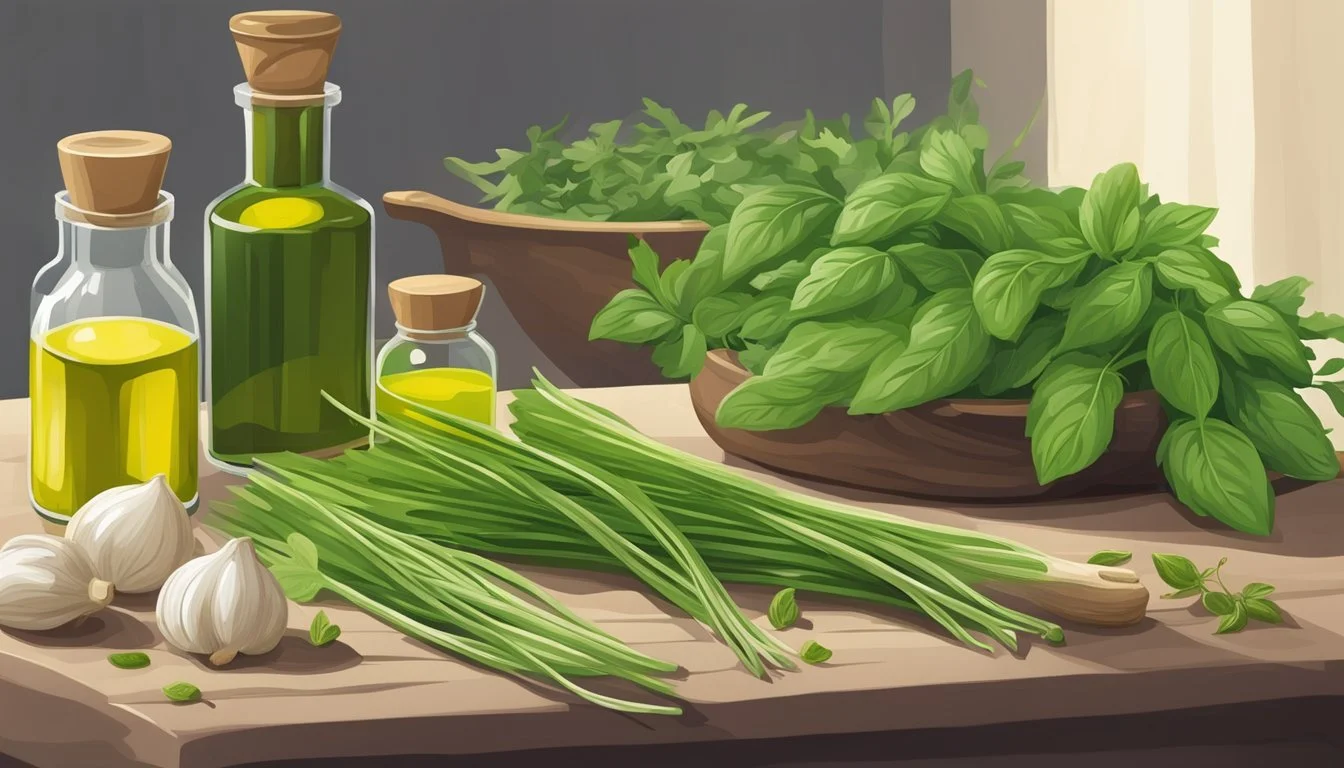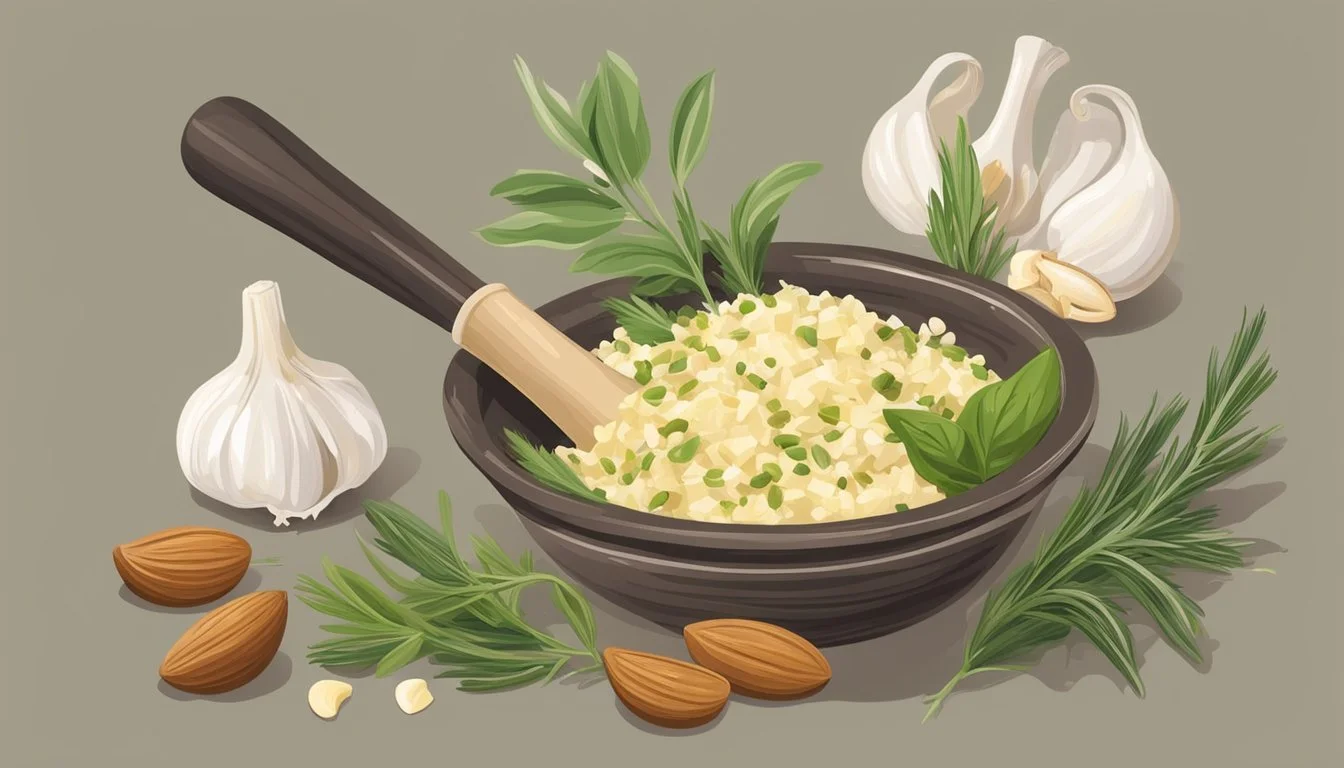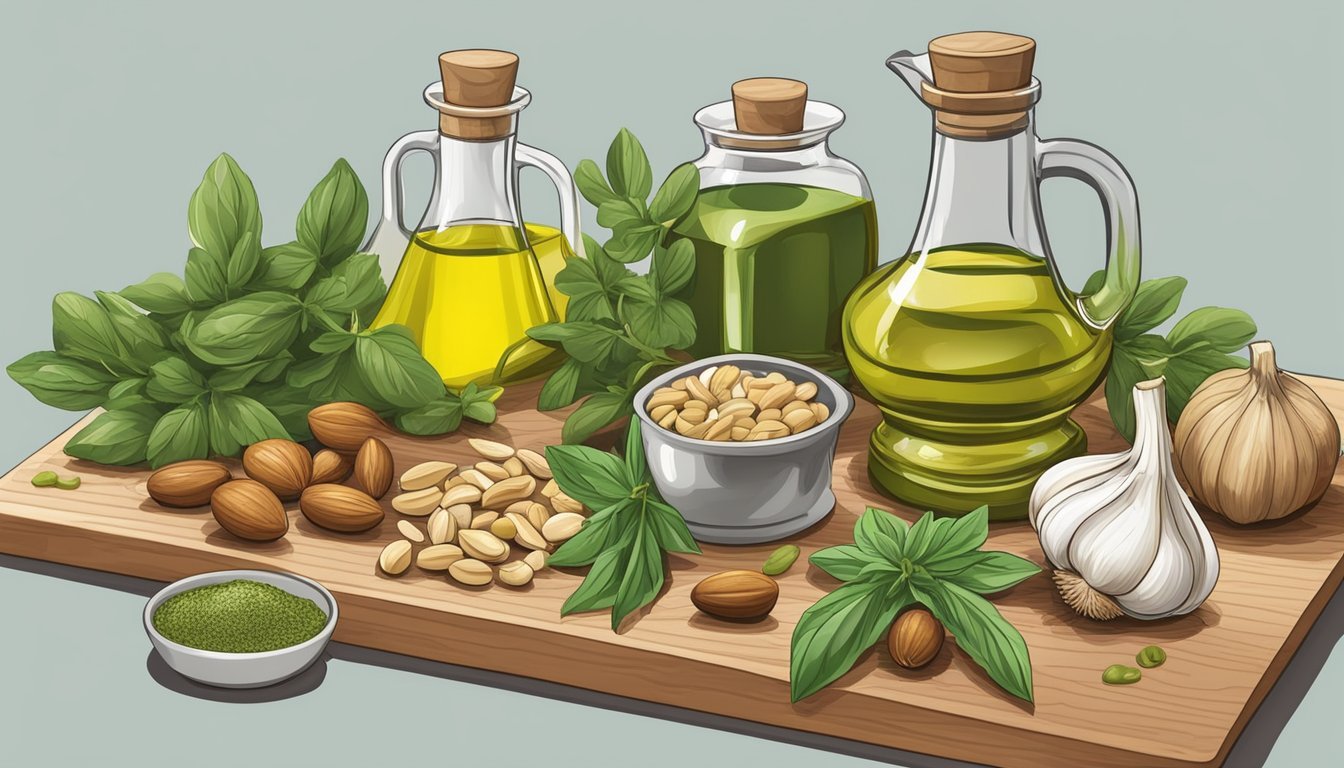Herb Stem Pesto
A Flavorful Way to Use Up Leftover Stems - Zero Waste Cooking Tips
In the culinary world, waste is a topic of growing concern, and resourceful cooking has become a hallmark of both home kitchens and professional establishments. Herb stems might often be discarded, but they harbor a wealth of flavor that can transform dishes. Pesto, a versatile and flavorful sauce traditionally made with basil leaves, presents an excellent opportunity to utilize these overlooked parts of herbs. By incorporating stems from herbs such as parsley, cilantro, and basil, cooks can create a herb stem pesto that is not only vibrant in taste but also a testament to sustainable cooking practices.
The robustness of herb stems makes them less delicate than the leaves, which adds to their suitability in a blended sauce like pesto. This unique take on the classic condiment can add depth and complexity to a variety of dishes. With the simple act of blending herb stems with traditional pesto ingredients like nuts (What wine goes well with nuts?), cheese, garlic, and oil, one can craft a sauce that is both innovative and rooted in the timeless principles of maximizing flavor and minimizing waste.
Understanding Herb Stems
Herb stems are often overlooked in cooking, yet they're a treasure trove of flavor and nutrients, offering both culinary and environmental benefits.
Types of Herb Stems
Herb stems vary widely in texture and flavor. Hardier stems, like those from rosemary, are tougher and more difficult to use than the soft stems found in herbs such as basil, parsley, cilantro, and mint. The texture of soft herb stems is much more palatable and can be effortlessly incorporated into dishes.
Basil Stems: Comparable to the leaves but slightly more intense.
Parsley Stems: Stronger taste than the leaves, yet suitable for cooking.
Cilantro Stems: Packed with the same vibrant flavor as the leaves, excellent in sauces.
Mint Stems: Milder than the leaves, but still with a refreshing flavor profile.
Nutritional Value
Herb stems are rich in nutrients, much like their leaf counterparts. They can be a source of vitamin C and potassium, contributing to overall health and well-being. For example, parsley stems offer more than just flavor—they come with the added benefit of being rich in vitamin C.
Vitamin C: Essential for immune health; found notably in parsley stems.
Potassium: An important mineral for heart health; basil stems are a good source.
Sustainability and Use
Incorporating herb stems into recipes is an excellent way to minimize food waste, aligning with sustainable cooking practices.
Reducing Waste: Utilizing the whole herb, including stems, lessens kitchen waste.
Culinary Use: Soft stems can be finely chopped and added directly to sauces like pesto to enhance flavor without compromising texture.
The use of herb stems aligns with the principle of using as much of the plant as possible, reducing waste and making the most out of purchased produce. By integrating stems into cooking, one not only enhances the dish's taste profile but also contributes to a more sustainable way of consuming herbs.
Preparing for Pesto
When making herb stem pesto, selecting appropriate stems, thorough cleaning, and having the right equipment are essential steps to ensure the final product is both flavorful and safe to consume.
Selecting the Right Stems
Herb stems suitable for pesto typically come from soft herbs like parsley, cilantro, dill, and basil. One should avoid tougher, woodier stems such as those from rosemary or oregano, as they do not blend well and may result in a gritty texture. When choosing stems, they should be:
Fresh, without any signs of wilting or browning
Free from pests and mold
Washing and Prepping Stems
To prepare stems for pesto:
Rinse the stems under cold, running water to remove any dirt or residue.
Pat them dry with a clean kitchen towel or paper towels.
Use a sharp knife to chop the stems into smaller pieces. This will help them blend more easily and ensure a smoother pesto.
Equipment Essentials
The key piece of equipment for making pesto is a food processor or blender. These appliances are powerful enough to process the stems into a fine consistency. Additionally, one will need:
A sharp knife for chopping
A spatula for scraping the sides of the blender or processor
When it comes to oil, extra virgin olive oil is preferred for its flavor and health benefits. One should have it on hand, ready to add to the pesto mixture in a slow stream as it blends.
Classic Herb Stem Pesto Recipe
Making pesto from herb stems is an ingenious way to reduce waste and enhance flavor in dishes. This recipe creates a classic pesto using leftover stems, providing a simple solution for home cooks to utilize every part of their herbs.
Ingredient List
Stems: From herbs such as parsley, cilantro, or basil (1 cup)
Leaves: Fresh basil leaves (1/2 cup)
Nuts: Walnuts or pine nuts (1/3 cup)
Cheese: Grated Parmesan cheese (1/2 cup)
Garlic: 2 cloves, peeled
Seasoning: Salt and freshly ground black pepper to taste
Oil: Extra-virgin olive oil (1/2 cup)
Acid: Fresh lemon juice (1 tablespoon)
Step-by-Step Instructions
Preparation: Gather the herb stems and remove any tough, fibrous parts.
Blending: In a food processor, combine the herb stems, basil leaves, nuts, garlic, salt, and pepper. Pulse until coarsely chopped.
Adding Cheese: Add the grated Parmesan cheese to the mixture and pulse again to combine.
Olive Oil: While the food processor is running, slowly drizzle in the olive oil until the mixture becomes smooth and emulsified.
Finishing Touch: Add the lemon juice and give it one final blend. Taste and adjust the seasoning if necessary.
Texture and Consistency Tips
For a smoother pesto, blend the ingredients longer until the desired consistency is reached.
If the pesto is too thick, gradually add more olive oil while blending until it loosens to your liking.
The final texture should be creamy and spreadable, not overly pureed or liquidy. Adding the oil slowly helps control the consistency.
Always taste and adjust the seasoning after blending, as the flavors will meld together differently once combined.
Creative Variations and Combinations
When making herb stem pesto, the possibilities are vast. The core concept is to blend herb stems with nuts, cheese, and oil, but each choice impacts the final flavor profile and texture, offering a canvas for experimentation.
Incorporating Different Herbs and Nuts
Herbs: While traditional pesto uses basil stems, chefs may also use cilantro, parsley, or mint stems for a unique twist. Each herb brings its distinct flavor.
Nuts: Classic pesto calls for pine nuts, but substituting walnuts or almonds offers a deeper taste, while sunflower seeds or pistachios add a nutty crunch.
Dairy-Free and Vegan Options
Using cheese substitutes, such as nutritional yeast or vegan parmesan, allows for a vegan variation that retains the creamy, savory component of the pesto. Nutritional yeast adds a cheesy flavor without dairy.
Nutritional Yeast: Adds a cheese-like flavor, making it an excellent choice for dairy-free pesto.
Vegan Parmesan: Available in stores or homemade, this adds the classic pesto taste without using actual cheese.
Infusing with Citrus and Other Flavors
Citrus zest, like lemon, can add a bright, tangy note to the pesto – an instant pop of flavor. For those looking to go beyond the traditional basil pesto:
Lemon: A squeeze of lemon juice or zest can brighten the pesto and add healthy citrus notes.
Vinaigrette: Herb stem pesto can be thinned with additional olive oil and vinegar to create a vibrant dressing or vinaigrette for salads.
Serving Suggestions and Pairings
Herb stem pesto, rich in flavor, offers a creative and waste-minimizing approach to enhance a variety of dishes. From traditional pastas to inventive sandwiches, its robust taste complements an array of recipes.
Pasta and Soups
Pasta: Herb stem pesto adds depth to simple pasta dishes. One can simply toss it with spaghetti for a quick meal or layer it in lasagna for added complexity.
Soups: A dollop of pesto can transform the flavor profile of a soup. Add it to minestrone or a creamy broccoli soup for a burst of freshness.
Salads and Sandwiches
Salads: For salads, one can mix herb stem pesto into vinaigrettes or drizzle it over a caprese salad (What wine goes well with caprese salad?) to bring out the bright, herbal notes.
Sandwiches: Spreading pesto on sandwich bread elevates a basic turkey or vegetable panini. It works particularly well as a condiment in Mediterranean-themed sandwiches.
As a Garnish or Spread on Various Dishes
Pizza and Grilled Meats: Pesto serves as an excellent garnish on pizza, delivering a herbal punch with every slice. When spread over grilled meats, it can add an Italian flair and enhance the meat's natural flavors.
By using herb stem pesto in these suggested manners, one can not only enjoy its versatile flavor but also contribute to a more sustainable kitchen by reducing food waste.
Storing and Preserving Pesto
Proper storage is crucial for maintaining the flavor and freshness of herb stem pesto. Whether keeping it in the refrigerator for immediate use or freezing it for later, a few key strategies can help prolong its shelf life and preserve its vibrant taste.
Short-Term Storage Tips
For those who plan to use their pesto within a short time frame, refrigeration is the best option. Store pesto in an airtight container in the fridge, specifically in the coldest part, to ensure a consistent temperature. The pesto should be covered with a thin layer of olive oil before sealing to prevent oxidation. This method is ideal for use within one week.
Refrigeration duration: Up to 1 week
Container: Airtight container
Additional tip: Cover with olive oil to prevent browning
Freezing for Longevity
For long-term storage, freezing pesto preserves its flavor for several months. Place the pesto in an ice cube tray or freezer-safe container, leaving a small space to allow for expansion as it freezes. Cover the container, or if using an ice cube tray, wrap it with cling film. Once frozen, transfer cubes into a freezer-safe bag, removing as much air as possible before sealing to protect against freezer burn.
Freezing duration: Several months
Containers for freezing:
Ice cube tray (for small portions)
Freezer-safe container
Protection: Wrap or cover; Remove air from freezer bags
Health Benefits and Dietary Considerations
When discussing the health benefits and dietary considerations of herb stem pesto, one should consider its caloric and macronutrient profile, as well as its fit within various diet plans. Herb stem pesto tends to be lower in calories than traditional pesto and retains a rich profile of vitamins and minerals.
Caloric and Macronutrient Profile
Herb stem pesto, made using the often-discarded stems of fresh herbs, is a nutritious condiment that can add flavor without excessive calories. The calorie content of pesto can vary, but herb stem versions often have a lower calorie count due to less oil and cheese compared to traditional recipes. Regarding macronutrients, the profile comprises a balance of fats, proteins, and carbohydrates:
Fats: Predominantly comes from olive oil and, if included, nuts and cheese. Expect a mix of monounsaturated, polyunsaturated, and saturated fats.
Proteins: Modest amounts from cheese and nuts.
Carbohydrates: Minimal presence, primarily from small amounts of sugars in the herbs.
Incorporation into Different Diets
Herb stem pesto can be adapted to meet the criteria of various dietary plans:
Vegan Diet: By substituting cheese with nutritional yeast and ensuring plant-based oils and nuts, herb stem pesto becomes a vegan-friendly sauce with good nutritional value.
Low-Calorie Diet: Herb stem pesto made with less oil and cheese fits well within a calorie-conscious diet.
Ketogenic Diet: Although careful consideration of the fat sources is required, the high-fat, low-carb nature of pesto aligns with keto guidelines.
In summary, herb stem pesto is a healthy addition to many diets, offering versatility in its use and benefits derived from fresh herbs. It provides flavor while contributing to the intake of essential nutrients.
Cooking Beyond Pesto
While herb stems are traditionally used to make pesto, their utility extends far beyond this classic application. Culinary enthusiasts can harness the full potential of leftover herb stems in various other dishes, such as enriching stocks and broths or incorporating them into original cooking garnishes.
Using Herb Stems in Stocks and Broths
Herb stems infuse stocks and broths with a deep, herby flavor, making them perfect for enhancing the taste of soups and stews. When preparing a vegetable or chicken broth, chefs can add stems from herbs such as parsley, cilantro, or basil, ensuring these stems are thoroughly cleaned before use. It is typical to simmer the stems for an extended period with vegetables like carrots, celery, and onions to extract their essence.
Vegetable Stock: Add a handful of herb stems in the last 30 minutes of simmering to incorporate their flavor without bitterness.
Beans or Legume Broths: Herb stems impart a subtle aroma to beans, improving the overall taste complexity.
To utilize broccoli stems or sprouts, it is recommended to add them early in the cooking process, as their fibers need more time to break down and release flavor.
Creative Uses in Cooking and Garnishing
Herb stems are not only for stocks; they are also edible and can be creatively used across a variety of dishes:
Roasted Vegetables: Toss herb stems with olive oil and seasonings to roast alongside vegetables for an enhanced flavor profile.
Garnishing: Finely chopped, tender herb stems can garnish salads or grain bowls, adding a fresh, herby punch.
Flavor Boosters: Puree stems into a base for sauces or dressings, giving dishes a fresh twist.
Committing to using the entirety of an herb, including its stems, promotes a no-waste approach to cooking that maximizes the taste and potential of these versatile plants.
Concluding Thoughts on Herb Stem Utilization
Herb stems should not be overlooked as a flavorful and versatile kitchen resource. They carry a bouquet of flavors that can enrich a variety of dishes, including the ever-popular pesto. In particular, stems from soft herbs like parsley, dill, cilantro, and basil are as flavorful as their leafy counterparts, albeit sometimes with a milder taste profile.
The utilization of herb stems aligns with eco-friendly cooking practices. It serves the dual purpose of minimizing kitchen waste and maximizing the use of purchased produce. Creatively incorporating stems into recipes is both economically beneficial and environmentally conscious.
Making Pesto with Herb Stems:
Wash stems thoroughly to remove any dirt or debris.
Remove any tough, woody parts that may not blend well.
Chop finely to ensure a consistent texture in the pesto.
Adjust recipes as necessary, since stem flavors can be milder.
Cooks exploring the use of herb stems should feel confident in their decision to do so. They are safe to eat and contribute essential oils that define herbaceous flavors. While harder, woodier stems may require more prep work, the rewards are a testament to their intrinsic value in the kitchen.
By embracing herb stem utilization, one can discover new dimensions of flavor and practice sustainability. This underrated part of the herb can invigorate pesto and other recipes with its subtle yet distinct essence, revealing the full potential of herbs from leaf to stem.







